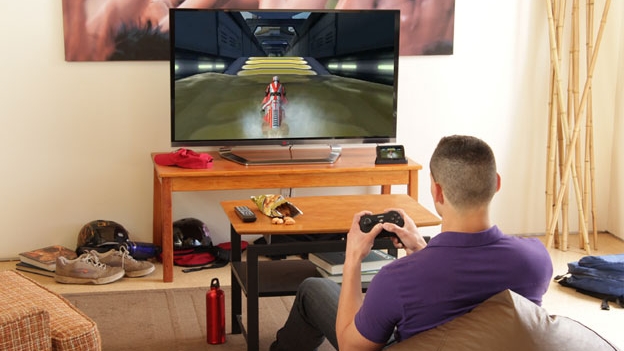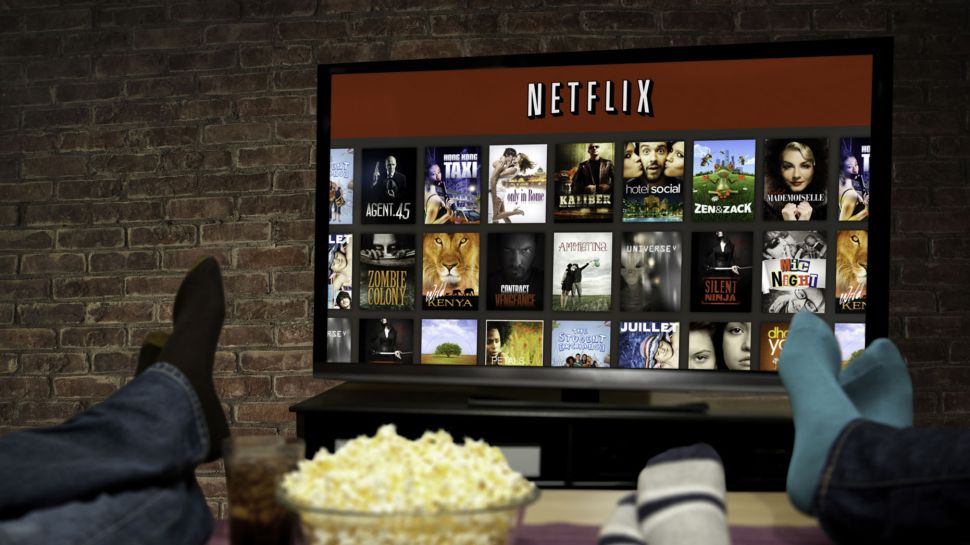
Introduction
This past year was another big one for the living room. For starters, we finally got 4K players worthy of our expensive TVs in the Roku 4 and new Amazon Fire TV.
Plus, HDR has evolved from a buzzword thrown around at CES 2015 to a tangible, toggle-able part of the Amazon Instant Video experience.
In the same year, we've seen Steam Machines, like the Alienware Alpha and Origin Omega, one of the long-promised VR headsets (Samsung Gear VR) and A/V receivers capable of delivering Dolby Atmos and DTS: X surround sound.
But work in the living room is never done.
CES 2016 will bring a slew of new products for the space, such as new Ultra HD televisions, multi-room speakers and the further expansion of Android TV. Here's everything that you can look forward to seeing in your entertainment center once the clock strikes 12 on December 31.

4K TVs, OLED and otherwise
Let's start with the shining star of the living room: your TV. In 2016, your rectangular window into the entertainment world is going to get bigger, brighter and sharper than ever.
How's your TV going to take it to the next level? Quantum dots, OLEDs and additional lighting zones that will help bring more uniformity to the backlight of modern-day screens.
Without going too far down the rabbit hole, quantum dots are electrically controlled filters that can radically improve the color of your screen. OLEDs, or organic light-emitting diodes, eschew the traditional backlight for a series of thin, light-emitting films that can individually be turned on and off.
This year, expect LG to make another leap forward with both technologies, while companies like Samsung, Panasonic and Hisense use the year to overhaul their respective 4K line-ups.

Audio in every room of your house
At one time, Sonos was the only name in multi-room audio. If you wanted a classic crooner's song playing in your living room and, say, a swanky swing tune going on in the kitchen simultaneously, Sonos was the only game in town.
But, in 2015, everything changed when Chromecast Audio delivered a solution for high-definition streaming audio for around the cost of a few CDs. Elsewhere in the industry, LG and Samsung launched their own solutions to the problem with Music Flow and the Radiant speaker system, respectively.
In 2016, you can expect these products to drop significantly in price, as other companies come into the fray to steal some more of Sonos's pie. Though, Google's solution has already set the price ceiling at an all-time low, so we'll see just how significant those drops are.

VR invading the living room
Traditional televisions and stalwart stereo systems have long been the pillars of the living room. But, come January 1, you can add living room gaming PCs and virtual reality headsets to that list.
Starting with the latter, VR is set to explode in the new year. What's our proof? Two of the biggest products in the category, the Oculus Rift and HTC Vive, are very nearly living room ready.
The only hurdle to our Ready Player One-esque destiny is price. Neither system has a solid price point and while the world economy has definitely taken a turn for the better in the past few years, scientists are still hard at work creating the long-desired money tree.

Rise of the (Steam) Machines
If you like your video games flat and directly in front of you, don't fret. There will always be a home for the traditional systems next to the TV.
The big change coming to consoles this year is the further expansion of Valve's living room initiative that took a nascent form all the way back in 2013. The program, called Steam Machines, came to fruition late this year when the Steam Controller launched, finally tying the proverbial room together.
In 2016, you can expect the living room PC format to start picking up Steam (sorry) when more branded boxes from manufacturers, like Asus, make a dash for the living room.

Ultra HD Blu-ray
Separately, Ultra HD and Blu-ray are impressive technologies. Combined, they spell the future format for physical media in home entertainment.
After several iterations and many long-winded debates about standards, Ultra HD Blu-rays are almost ready to take the helm as the new video standard in 2016.
While you might not be overly excited to ditch DVDs and replace your entire movie collection yet again, the reason for the switch is a practical one: higher resolution video needs more storage space than Blu-rays or DVDs alone can provide.
The format's lowest-end specs are 50GB discs encoded at up to 82Mbps, while at the upper limit of the technology, 100GB discs can support 128Mbps encoding. For reference, DVDs range in bitrate from 3Mbps to 9.5Mbps.
In short, it's going to be a massive upgrade in quality.

Streaming services surpass cable
This one's more of a prediction than a set-in-stone guarantee. But, with the way things are going for Netflix and Amazon Prime Instant Video, chances are good that 2016 will be the year that streaming services surpass cable if not in subscriber base then, at the very least, content.
Netflix recently announced that it plans on doubling the amount of original content it produced this year, with 31 new shows coming in 2016. Naturally, Hulu, Amazon and Sling TV have their own plans for dominating the streaming space.
And while quantity doesn't always mean quality, Netflix and Amazon together garnered an unreasonably high 46 Emmy nominations this year for shows like Orange is the New Black, House of Cards and Transparent. That's on par with NBC's 41 Emmy nominations and even slightly more than the 35 FOX got.
Extra competition from the streaming side might make longstanding cable companies rethink their strategy, leading the top providers to slash prices to keep subscribers from cutting the cord. Of course, it's more likely that they'll continue to do what they do best in 2016: charging exorbitant amounts of money for hundreds of channels you don't want or need.

Nick Pino is Managing Editor, TV and AV for TechRadar's sister site, Tom's Guide. Previously, he was the Senior Editor of Home Entertainment at TechRadar, covering TVs, headphones, speakers, video games, VR and streaming devices. He's also written for GamesRadar+, Official Xbox Magazine, PC Gamer and other outlets over the last decade, and he has a degree in computer science he's not using if anyone wants it.